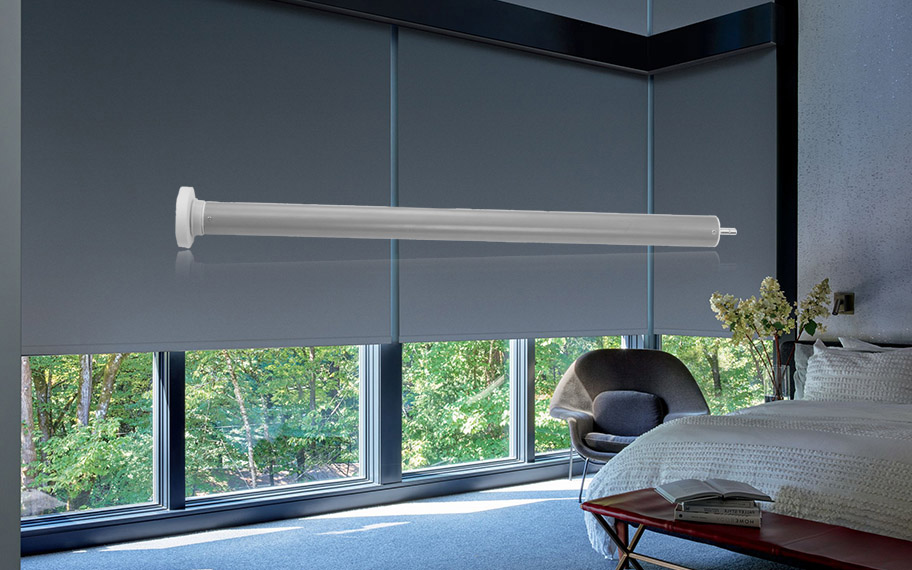Selection Requirements For Motorized Blinds
Motorized blinds have become increasingly popular for their convenience, energy efficiency, and modern aesthetics. Whether you’re upgrading your home or outfitting a commercial space, understanding the selection requirements for motorized blinds is essential to making the right choice. In this article, we’ll walk through the key factors to consider when selecting motorized blinds for your windows.
1. Tubular Motor Type: AC vs. DC
The first and most important consideration in the selection requirements for motorized blinds is the type of motor. There are two main options: AC motors and DC motors.
- AC Tubular Motors: These motors are typically more powerful and ideal for larger windows or heavier blinds. AC motors are known for their durability but may produce more noise than their DC counterparts.
- DC Tubular Motors: Quieter and more energy-efficient, DC motors are perfect for smaller or residential spaces. They offer smoother operation and can be integrated with smart home systems for better control.
Depending on the size and weight of your blinds, as well as your noise tolerance, you should choose the motor type that best suits your needs.
2. Control Options
Another critical factor to consider when determining the selection requirements for motorized blinds is how the blinds will be controlled. There are several options available:
- Remote Control: This is the most common and convenient method of controlling motorized blinds. A remote control allows you to adjust the blinds from anywhere in the room without getting up.
- Wall Switches: For a more permanent control solution, wall-mounted switches offer easy access and can be installed near the door or window.
- Smart Home Integration: For a more advanced setup, consider motorized blinds that integrate with smart home systems like Amazon Alexa, Google Assistant, or other home automation devices. This option allows you to control your blinds through voice commands or via an app on your phone.
- Timers and Sensors: You can also install timers or sensors to automate the blinds’ movement based on external factors like sunlight or room temperature, which helps improve energy efficiency.
Each of these options offers different levels of convenience and flexibility, so select the control method that aligns with your needs and lifestyle.
3. Noise Level
Noise is another important consideration when looking into the selection requirements for motorized blinds. While all motorized blinds will generate some sound when moving, the noise level can vary depending on the motor type.
- DC Motors: Typically quieter, making them ideal for bedrooms, living rooms, or other quiet spaces where noise could be disruptive.
- AC Motors: These are more powerful but can produce more noise, which may be distracting in quieter spaces. However, they are generally better suited for larger windows and heavier blinds.
If noise reduction is a priority in your space, consider opting for DC motors to ensure minimal disturbance.
4. Power Source
When selecting motorized blinds, it’s essential to consider the power source. Motorized blinds can be powered in various ways:
- Battery-Powered Blinds: These are easy to install since no wiring is required, making them ideal for renters or spaces where electrical installation is not an option. However, you will need to replace the batteries periodically.
- Wired Blinds: For a more permanent solution, wired motorized blinds are directly connected to the electrical system, offering constant power. They are often more reliable and require less maintenance than battery-powered options.
- Solar-Powered Blinds: Solar-powered blinds are eco-friendly and energy-efficient, making them a great option for homes or offices with ample sunlight. These blinds use solar panels to charge a battery, reducing energy costs over time.
Choosing the right power source depends on your preferences for convenience, installation, and energy savings.
5. Durability and Quality
Finally, consider the overall durability and quality of both the motor and the blinds themselves. The selection requirements for motorized blinds should include high-quality motors for smooth, reliable operation over time. Look for well-built motors from reputable manufacturers, and ensure that the blinds are made of durable materials that can withstand wear and tear.
It’s also essential to choose blinds that are resistant to fading, discoloration, and other types of damage. High-quality blinds will not only enhance the appearance of your space but also provide long-lasting performance.
Conclusion
In summary, understanding the selection requirements for motorized blinds is essential to making an informed decision. Pay close attention to motor type, control options, noise levels, power sources, and durability to ensure you select the right motorized blinds for your needs. With the right choice, you can enjoy enhanced comfort, convenience, and energy efficiency for years to come.
Tubular Motor FAQ
Zhejiang Walt Mech Electrical Co.,Ltd.


